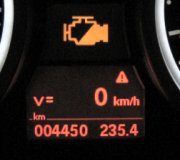You don't want to buy a full scanner unless you can get a lot of use out of it. I have a Chrysler DRB3 for all of my older vehicles, but that one had a list price of $6,200.00. For my newer Ram, I bought a Snapon Solus Edge from eBay for $1,800.00. The biggest disadvantage to Snapon scanners is they charge an unreasonable price for annual updates, and you can't skip any years. Mine is updated through 2017. If I want to have it updated to 2020 models, I have to buy the 2018 and 2019 updates first, at around $1000.00 each.
The DRB3 first became obsolete on 2004 Dakotas and Durangos, and finally on the 2008 Jeep models. It will work on your car, and other Chrysler models back to 1998. With an extra plug-in "Supercard", it will work on Chrysler models back to 1994 models, and it will do emissions stuff on all car brands sold in the US. Starting with 1996 models. For that reason, a lot of independent shops bought them. Since they are obsolete now, you can find them on eBay, and you may have a local shop with one they'd like to sell so they can invest in something newer. The last time I searched on eBay, the DRB3s were going for around $2000.00. I have multiples of all the extra plug-in cards that I sell at the nation's second-largest old car show swap meet. The original plug-in card lets the DRB3 work on 1983 through 1993 Chrysler models. (For anyone wanting a dealer-level scanner for use on only '95 and older Chrysler models, look for the older DRB2). You can find these for less than $200.00, but you have to use them with the correct cartridge. The last one made was for a '94 model, (yellow sticker to match the service manual covers), and it was an all-in-one cartridge that covered all Chrysler models from 1983 through 1995.
For what you need to do, I would suggest checking eBay for an out-of-date Snapon Solus Edge. When a shop lets them get out-of-date by four years, they can spend $4,000.00 to bring it up-to-date, or they can just buy a brand new one for just a few hundred dollars more. For this reason, the out-of-date models lose their value very quickly. That is good news for you. Some of these updated through around 2012 to 2014 can be found for around $700.00 to $800.00.
All three of these I described will access all the computers on your car. That includes the Body Computer, Anti-lock Brake Computer, Air Bag Computer, radio, instrument cluster, and a bunch of others I can't even think of right now. Scanners are "bi-directional", meaning they communicate both ways. They read and display data from the various computers, and you can talk back to them and command them to perform various functions. For example, you can command the Engine Computer to cycle the radiator fan relay on and off once per second so you can perform live diagnostic tests in that circuit.
For your transmission, among many other things, the DRB3 will read the "clutch volume index, (CVI)". That's a set of four numbers corresponding to the volume, in ccs, of fluid it takes to apply each of the clutch packs. An experienced transmission specialist can tell by those numbers the amount of life left in each clutch pack. The Transmission Computer learns those values as you drive, and constantly updates the software's shift schedules to maintain a smooth, clean shift like when it was new. The disadvantage is you don't get the two or three years of gradual sloppy shifts that tell us a rebuild is in your future. One day the transmission shifts like new, and the next day it can't update enough to overcome the excessive wear, then the slipping between shifts gets detected, a fault code is set, and the computer goes into limp mode. Limp mode is only to allow you to drive very slowly to a repair shop without needing a tow truck. Don't try to drive it that way very far. Limp mode keeps the transmission in second gear.
As an alternative to a scanner, the people at most auto parts stores will read fault codes for you for free. They used to use the simple code readers that only worked on Engine Computers, but now many of them are using scanners or more advanced code readers that can talk to some of the other computers. If you can find one that uses a scanner that can access your Transmission Computer, it will display the fault codes.
Be aware that fault codes never say to replace a part or that one is defective. They only indicate the circuit or system that needs further diagnosis, or the unacceptable operating condition. When a sensor or other part is referenced in a fault code, it is actually the cause of that code about half of the time. Before we waste your money on an unneeded part, we have to rule out wiring and connector terminal problems, and mechanical problems associated with that part.
One last comment related to scanners. You might want to look at Harbor Freight Tools if you want to invest in a scanner. They have a model for around $1100.00, as I recall, that looks very much like the Snapon Solus Edge. I don't know anything about it or how it's updated, or its quality, but for the features and price, it might be worth looking at.
Saturday, July 25th, 2020 AT 3:05 PM



